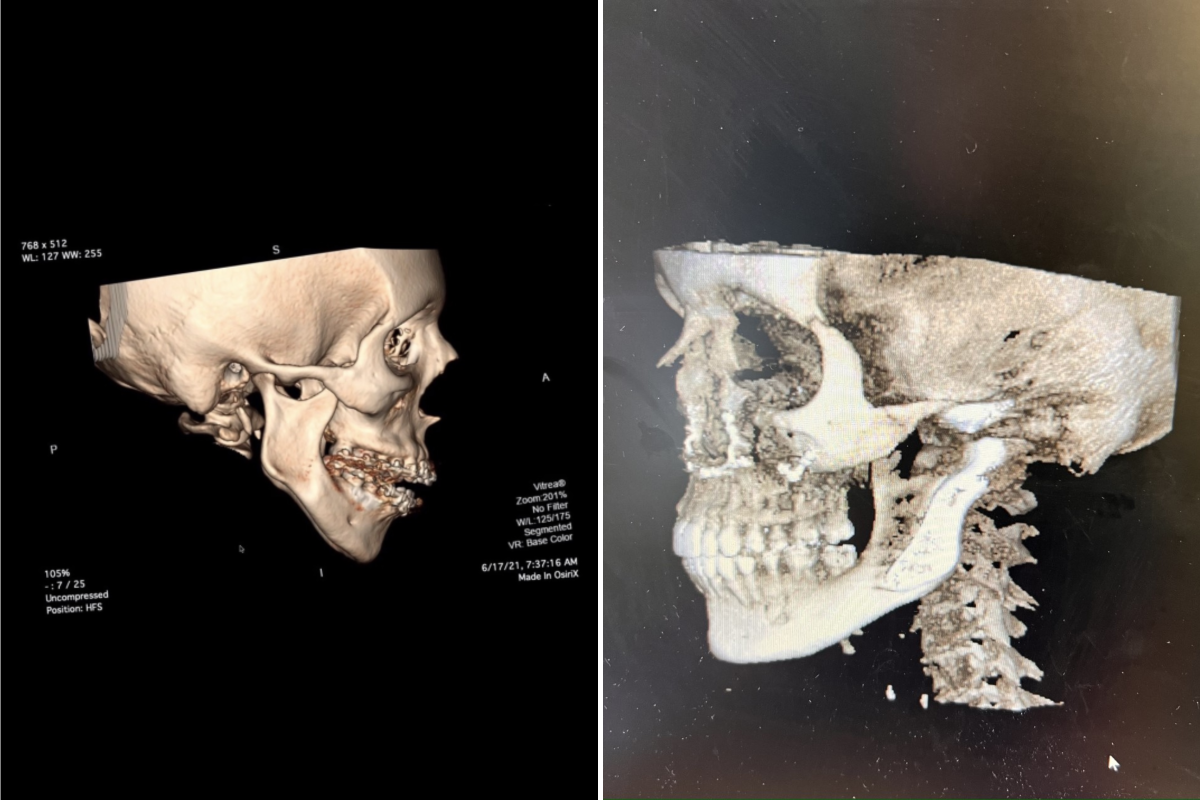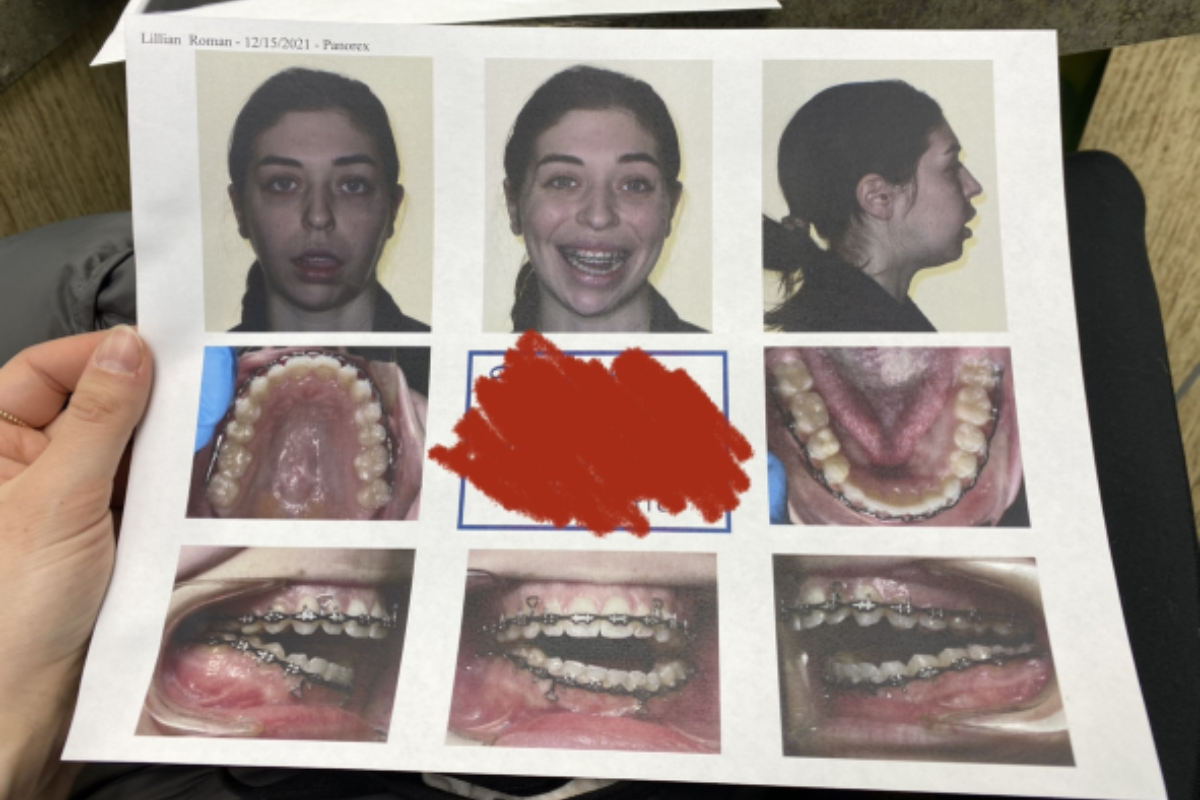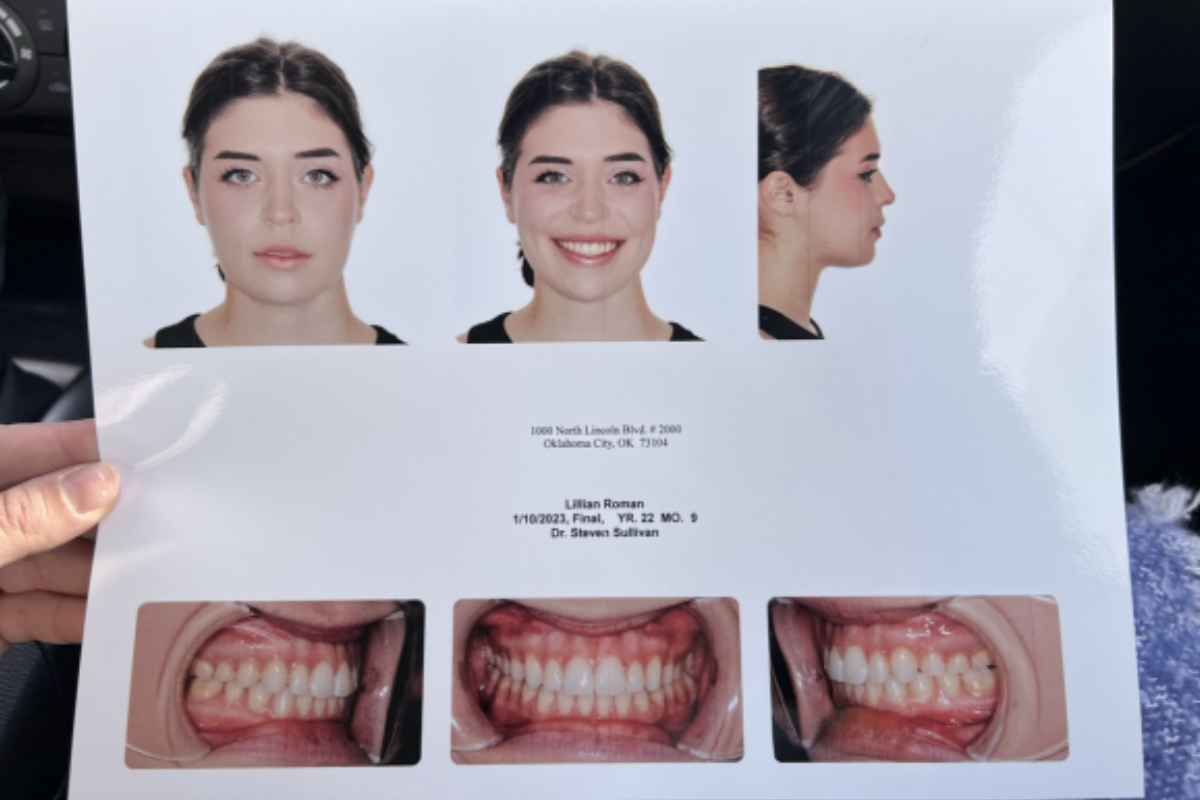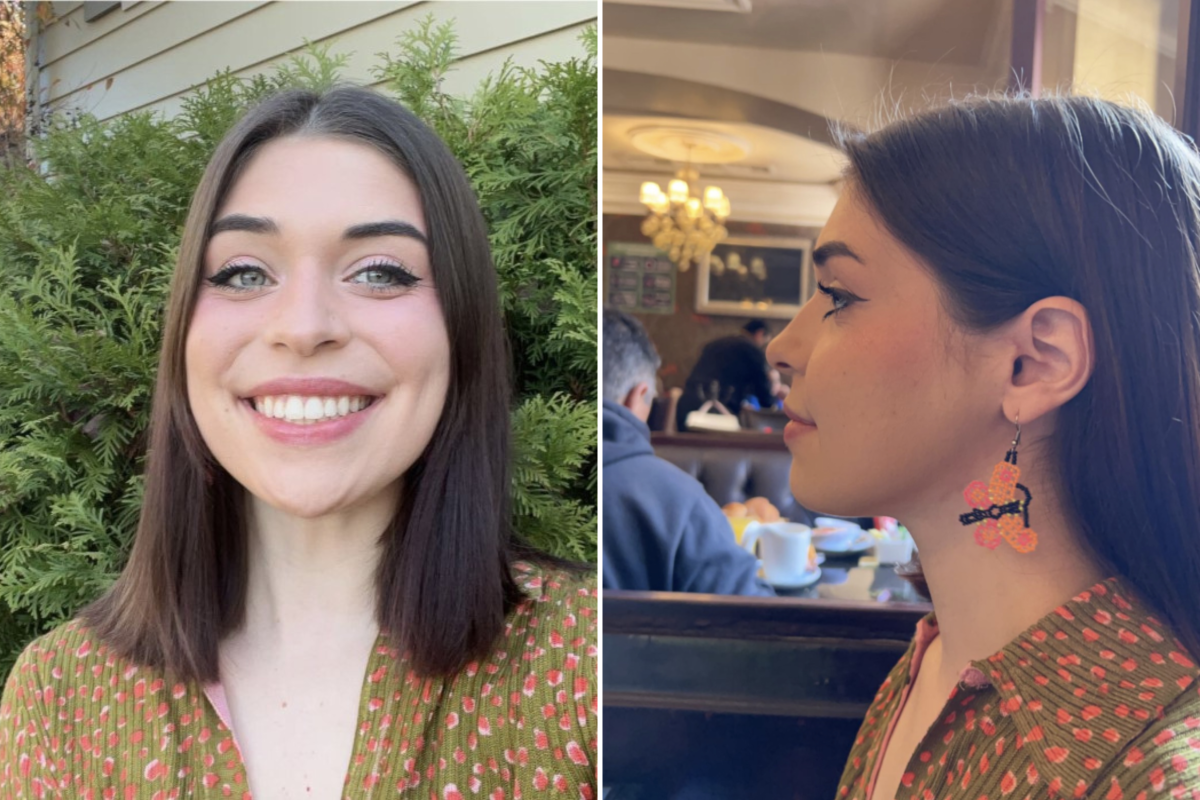Lillian Roman was a 20-year-old college student when a trip to the orthodontist led to a devastating diagnosis. She had idiopathic condylar resorption (ICR), a condition in which the body absorbs bone tissue in the jaw.
By her 21st birthday, her condition was so severe, she could no longer eat solid food, was malnourished, in constant pain, and even suffering from breathing difficulties.
The only option was an excruciating seven-and-a-half-hour-long operation, in which surgeons separated her top jaw from the bottom, repositioned it, and replaced the joints with titanium prosthetics.

"I realized that if I couldn't find somebody to fix it soon, I would live the rest of my life in agonizing pain, unable to breathe, and rapidly losing weight," Roman, now 22, told Newsweek.
She documented the painful journey on TikTok, and recently celebrated the first anniversary of the $100,000 surgery that brought her smile back.
What Is Idiopathic Condylar Resorption?
The Cleveland Clinic describes condylar resorption as "the breakdown and loss of bone in part of your temporomandibular joints or jaw joints."
People with ICR experience gradual bone loss in their mandibular condyles, which are the rounded ends of the lower jaw, near the neck. The mandibular condyles connect to the temporomandibular joints (TMJs), which in turn are connected to the skull.
As ICR-related bone loss progresses, the lower jawbone diminishes and retracts, and in severe cases like Roman's, the TMJs are also affected.

Along with aesthetic changes, ICR causes functional problems. Patients are left with permanent changes to their facial structure and jawline, including a significant overbite that can make it impossible to eat normally.
Some causes of condylar resorption include autoimmune diseases that affect joints and tissue, such as arthritis, systemic lupus erythematosus (the most common type of lupus), and scleroderma (where normal tissue is replaced with dense, fibrous tissue).
Jaw infections and trauma to the area can also trigger condylar resorption, but idiopathic (spontaneous) instances like Roman's are rare. This makes true ICR case numbers difficult to identify, but a 2015 study recorded 178 cases worldwide.
'My Orthodontist Said I Wasn't Wearing My Retainers'
Roman was fitted with her first pair of braces at age 8. They were removed when she turned 14, but despite religiously wearing her retainers, her teeth began to move.
At age 15, Roman noticed that her jawline had begun to recede. She developed an overbite along with an open bite—where the front teeth do not touch when the jaw is closed.

"I continued seeing my orthodontist for follow-ups. In each appointment my bite was worse," she said.
"I would mention this to him and he blamed me for not wearing my retainers.
"My problems were continuously dismissed, so by age 18, I decided to stop seeing him."
Roman had her wisdom teeth out at age 16, after which her jaw seemed to shrink even further. Over the next four years, her symptoms continued to worsen, and she developed pain in her right temporomandibular joint. She returned to her orthodontist, who was stumped.
"He recommended that I see a different orthodontist with better technology to figure out what was going on because to him it was a mystery," Roman said.
"The new orthodontist took one look at my bite and suspected joint degeneration, so he referred me to an oral maxillofacial surgeon for additional testing."

In the months leading up to the surgery, Roman's overbite was so extreme, her teeth no longer made contact.
"When I bit down all the way, I only contacted on one tooth in my whole mouth, my second right molar," she said.
"This eventually traumatized and infected the tooth and caused excruciating nerve pain on the right side of my jaw, even after the infection was cured."
As well as the constant pain, Roman was also experiencing breathing difficulties. As the condyles continued to break down, her jaw began to swing backward and block her airway. She couldn't sleep at night and was chronically fatigued.
"I knew it was my only chance at getting my old quality of life back that I had as a kid before the disease progressed," she said.
'No Other Choice'
Unsurprisingly, the diagnosis was overwhelming for Roman. She visited five separate surgeons, who all recommended different treatment plans.
One recommended double standard jaw surgery, which would correct the deformities and realign her jaws, while another suggested total joint replacements.
After conducting her own research, Roman discovered that unless the diseased jaw bone was removed, the odds of her condition relapsing were high.

"I decided to consult with Dr. Steven Sullivan in Oklahoma City, since he is one of the most renowned surgeons for ICR-related procedures," she said.
"He confirmed that I had severe degeneration in both TMJs and that there was no other option but joint replacements to restore both my function and aesthetic."
By the time her surgery date rolled around on January 21, 2022, Roman was excited to have the operation.
However, the risks were high. If the operation had been unsuccessful, Roman could have been left in further pain and without part of her jaw. As she is allergic to nickel, titanium prosthetics were used to prevent Roman's body from rejecting the new joints.

The surgeon removed the diseased bone from Roman's lower jaw and replaced the joints with titanium prosthetics. He also performed a Left I 3-Piece Maxillary, which involves separating the top jaw and repositioning it.
Fat was taken from Roman's stomach, near her belly button, to fill the gaps left by the diseased bone. The fat acts as a blocker, preventing the bone from growing back and causing a relapse.
Although Roman had been desperate for the surgery, the first month post-surgery was hard, as it took a week for her to recover from the anesthetic.
"I remember crying harder than I've ever cried in that first week after surgery, thinking I had made a huge mistake," she said.
"But, I would look at myself in the mirror every time I walked past it, and I'd see myself.
"Even with all the swelling, I could see that I looked like how I was supposed to look at 21 had the disease never altered my face so significantly."

As well as affecting her mental health, the physical recovery was long and painful for Roman. For the first four days, she was given pain medication through an IV, and initially, she felt like she'd lost her independence.
"Showering, talking and brushing my hair and teeth were so difficult," she said. "It took me months to recuperate my energy and do everyday tasks."
'I Had to Completely Relearn to Chew'
For the first eight weeks post-surgery, Roman could only eat liquid foods while her jaw bones fused. She then began to introduce harder foods into her diet, working her way up to solid food.
Her face stayed noticeably swollen for six months and didn't fully return to normal for a year. She also needed intensive orthodontic work to move her teeth into the correct position.
Although the surgery was a success, Roman had to undergo physical therapy to learn how to use her new jaw joints, which can only move up and down.

"Though you might not realize you're doing it, you move your jaw side to side to chew food," Roman said.
"Since I no longer had that range of motion, I had to completely relearn to chew.
"Other than that, it works like a normal jaw and feels semi-normal, with the exception of it feeling a bit more stiff than my natural joints."
She also needed further physical therapy to straighten her posture, as years of leaning forward to open her obstructed airway caused her to point her face forward, straining her neck.
Roman's braces were removed in October 2022, and now a year in post-surgery, she is happier than ever. She can eat anything she likes and has returned to a healthy weight.
"I am extremely pleased with my decision and grateful I was able to have the surgery," she said.
"It has been life-changing in so many ways."
Uncommon Knowledge
Newsweek is committed to challenging conventional wisdom and finding connections in the search for common ground.
Newsweek is committed to challenging conventional wisdom and finding connections in the search for common ground.
About the writer
Sophie is a Newsweek Pop Culture and Entertainment Reporter based in Lincoln, UK. Her focus is reporting on film and ... Read more
To read how Newsweek uses AI as a newsroom tool, Click here.








